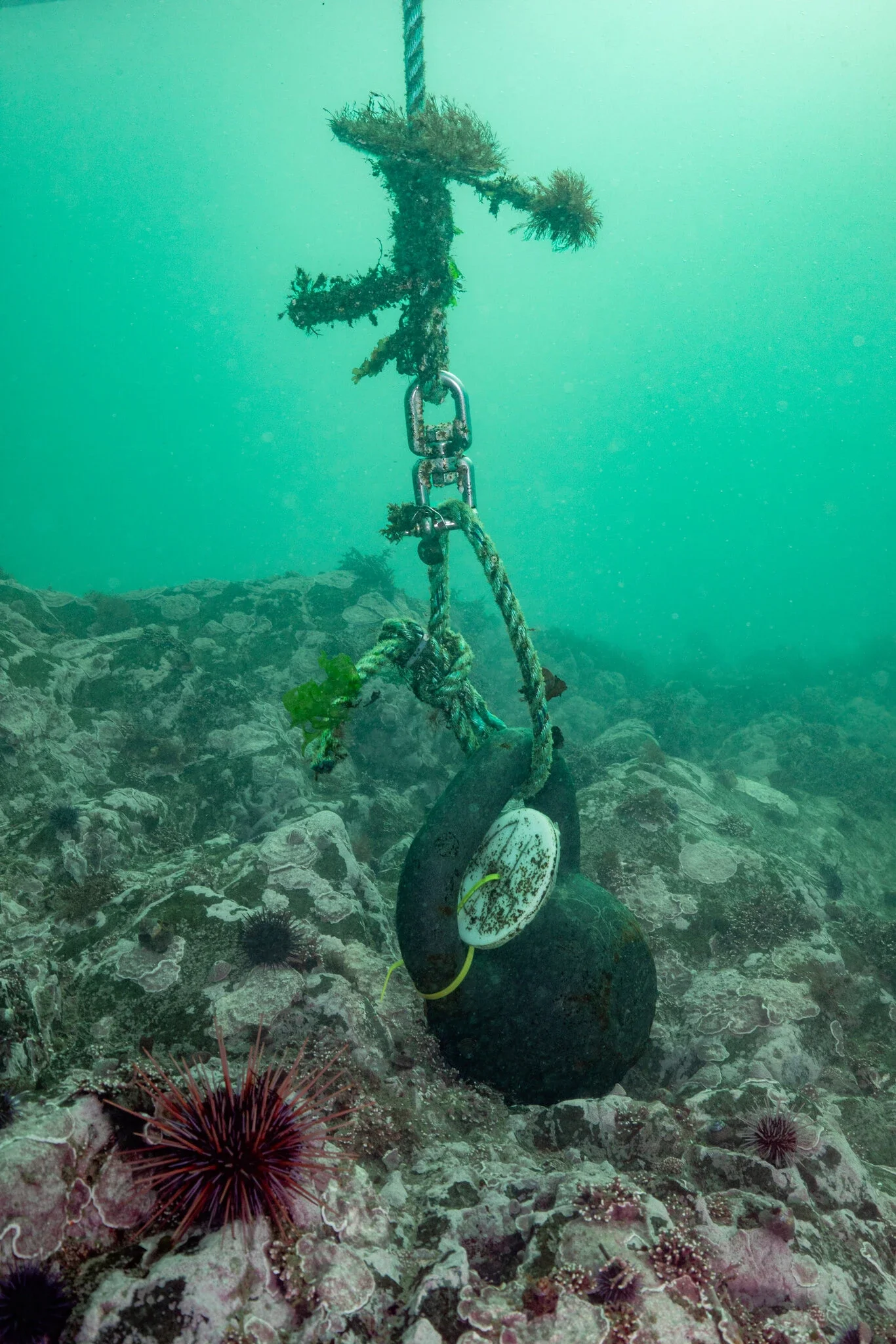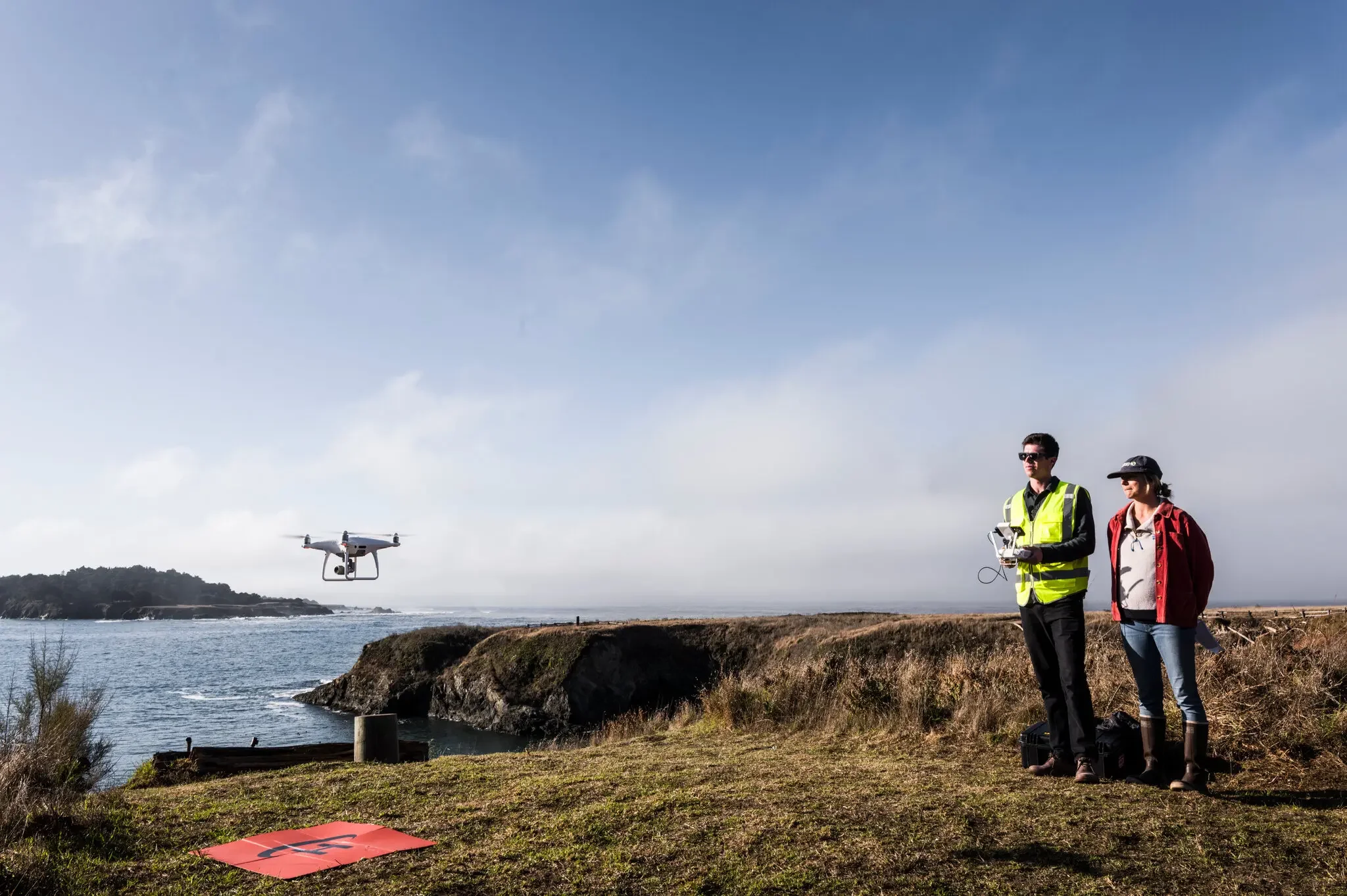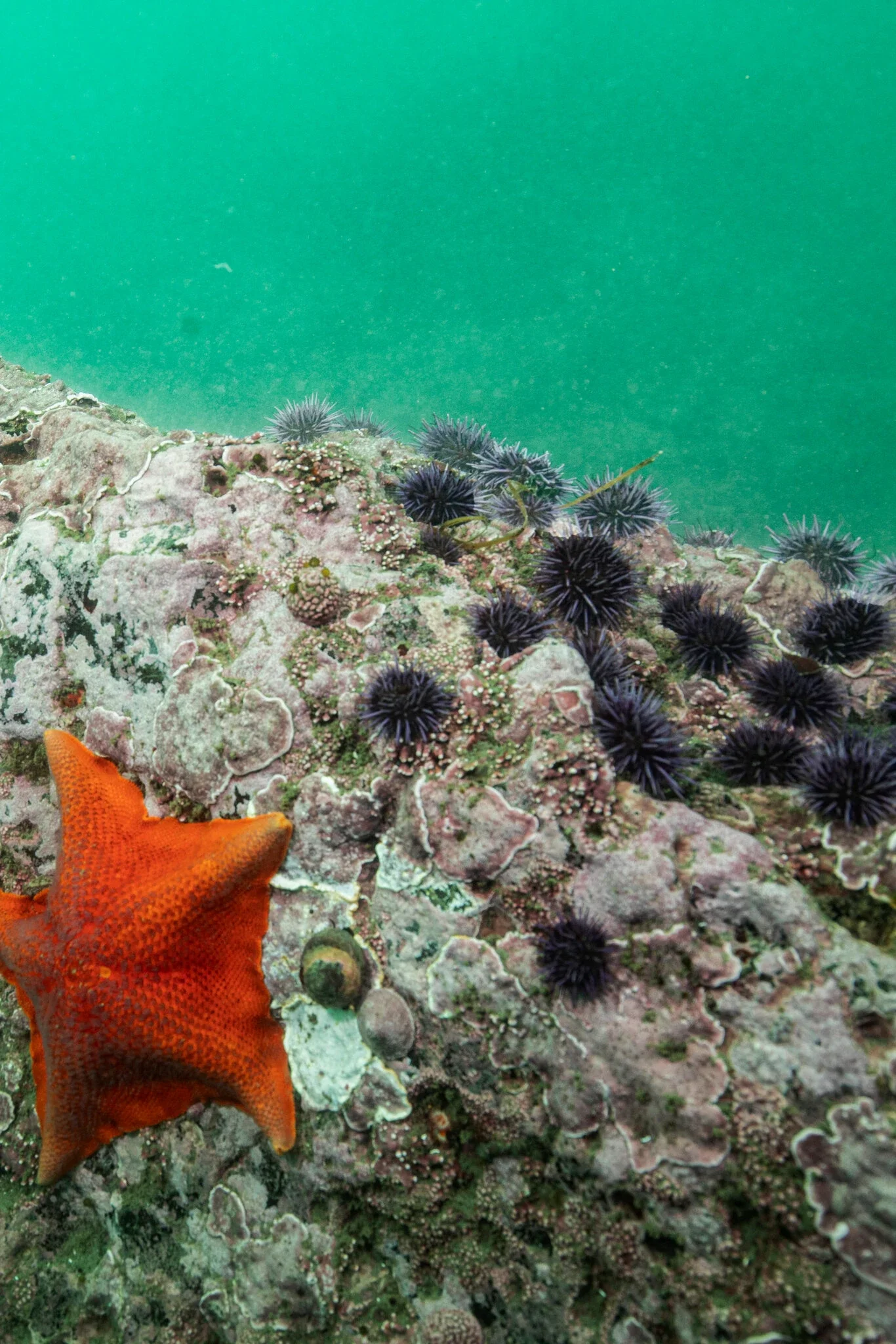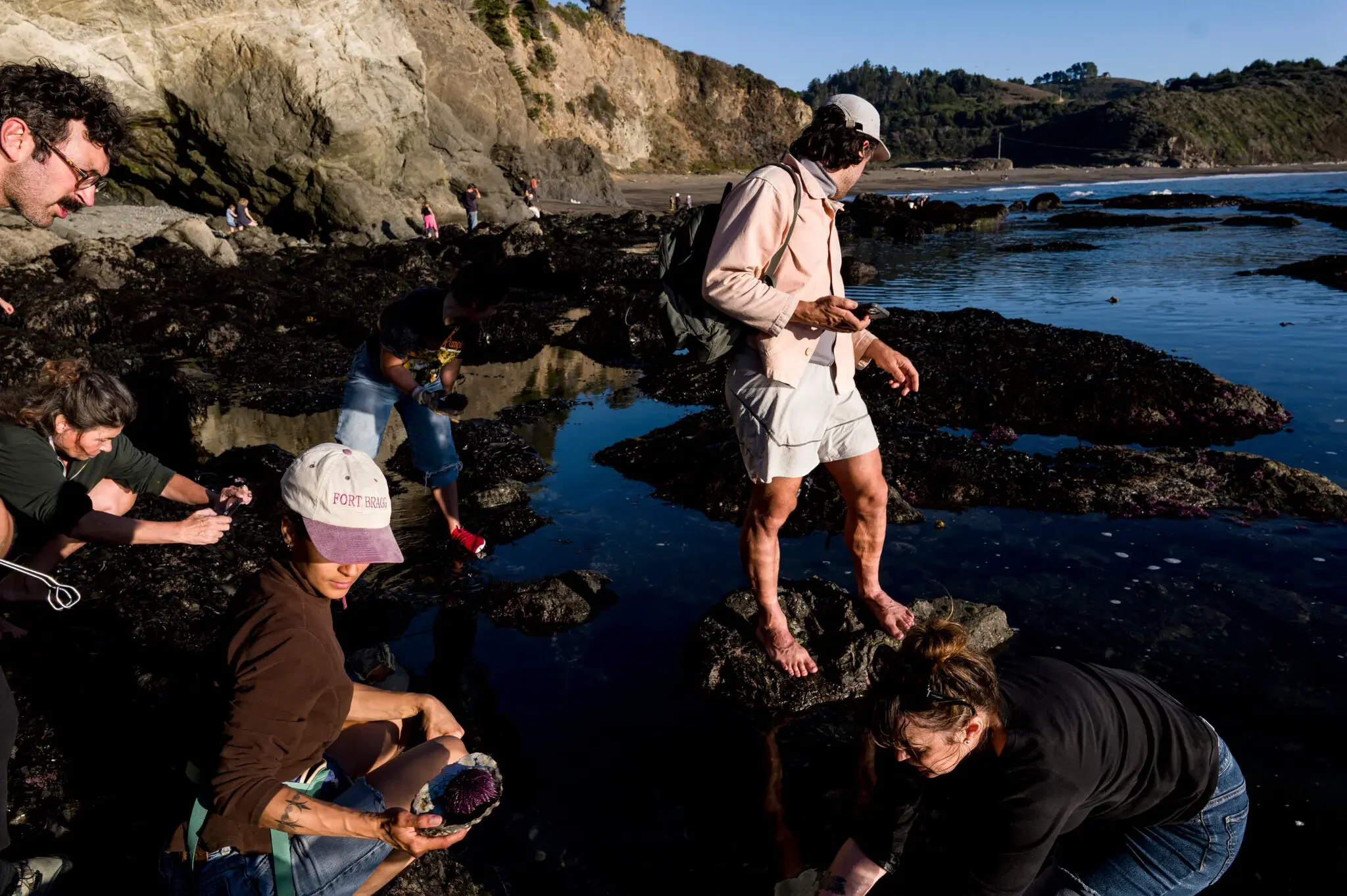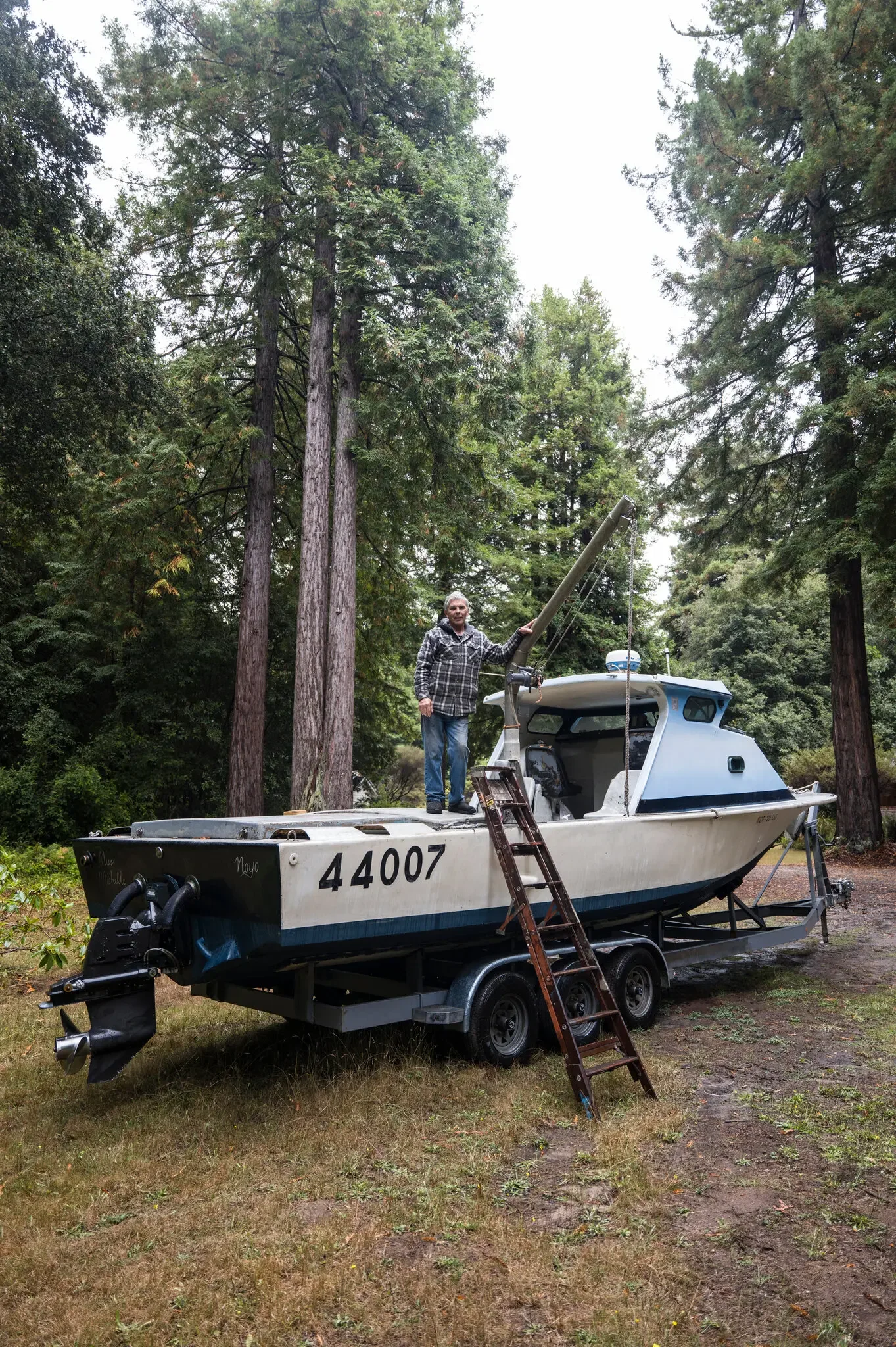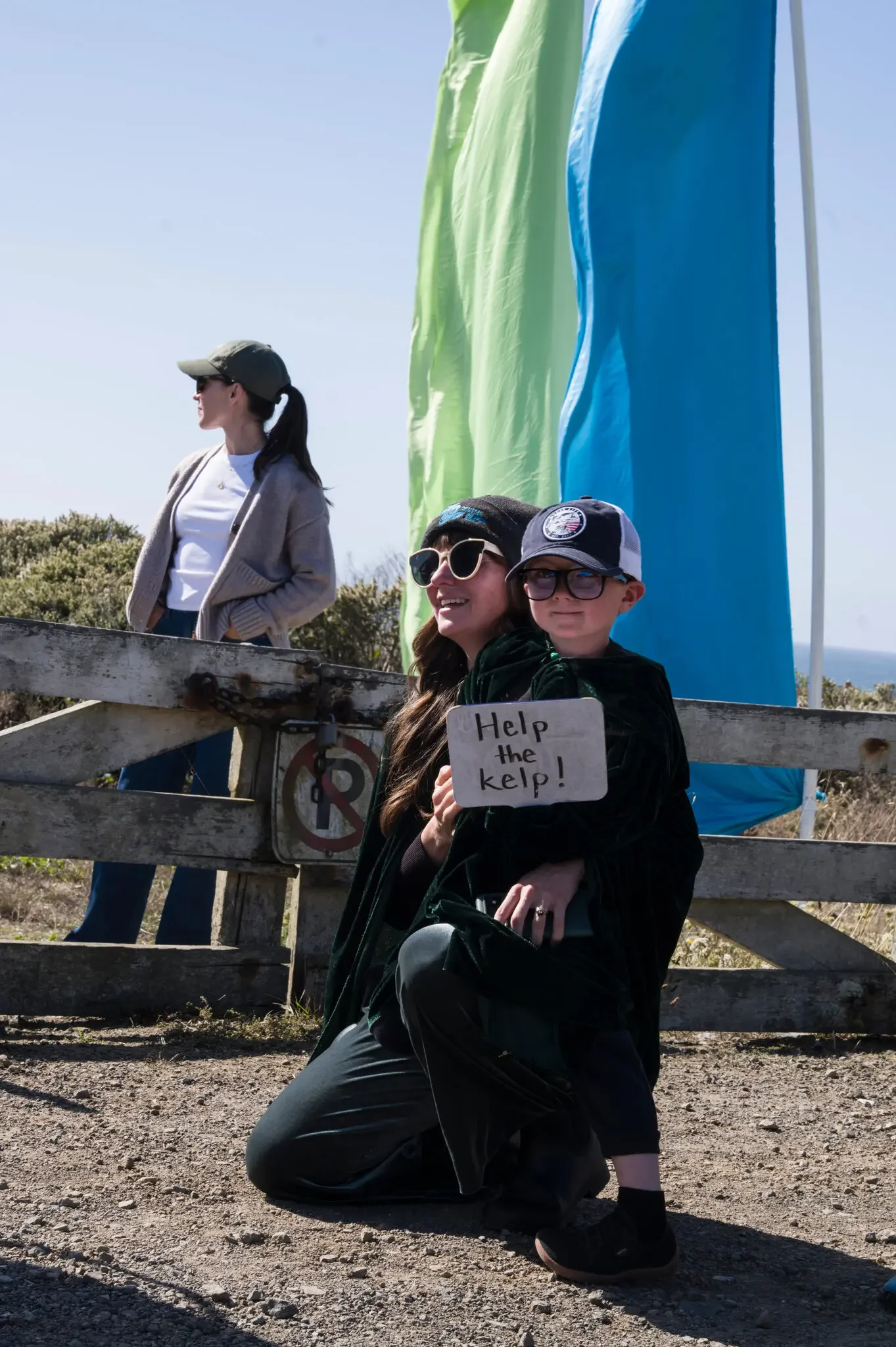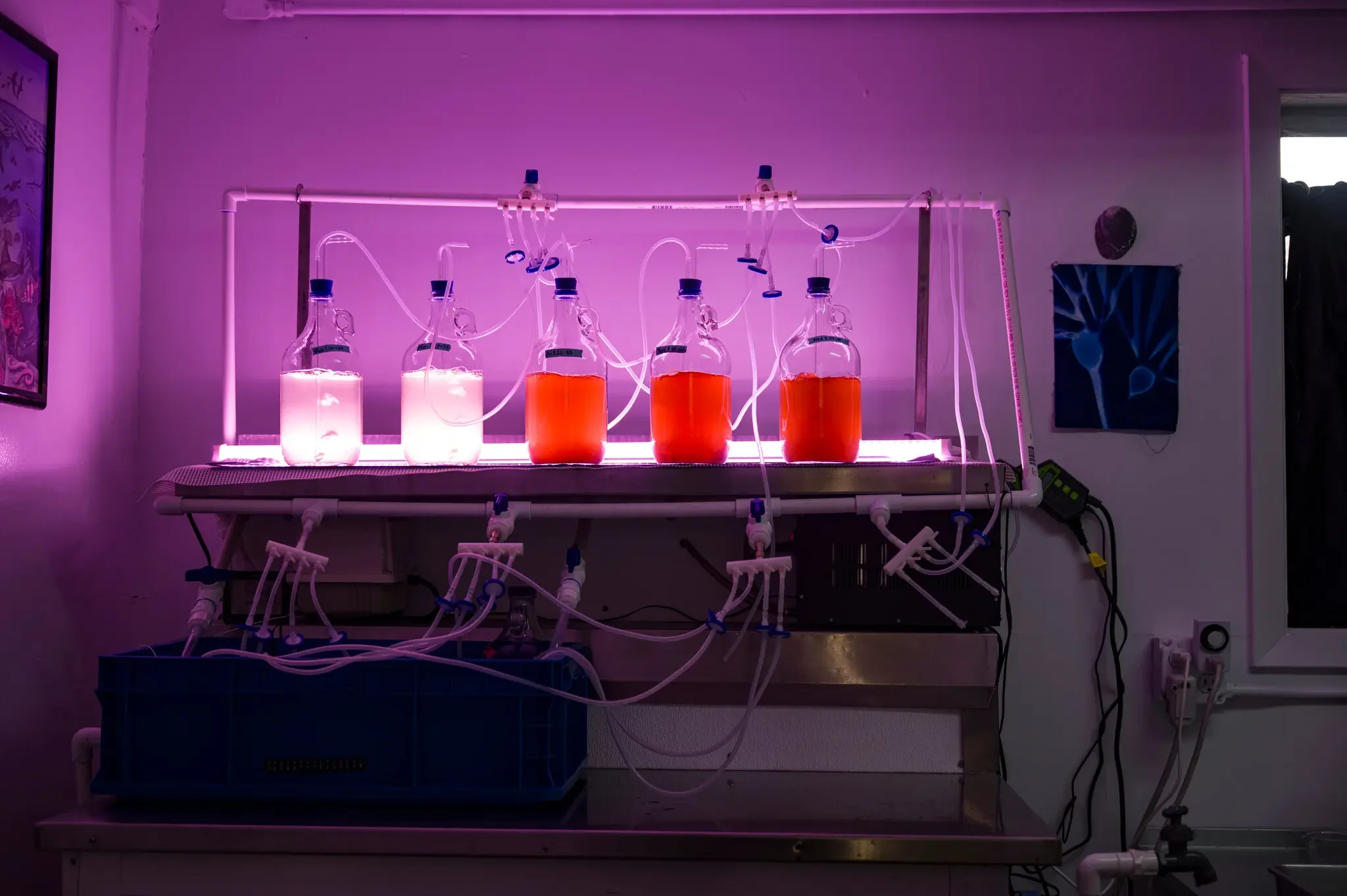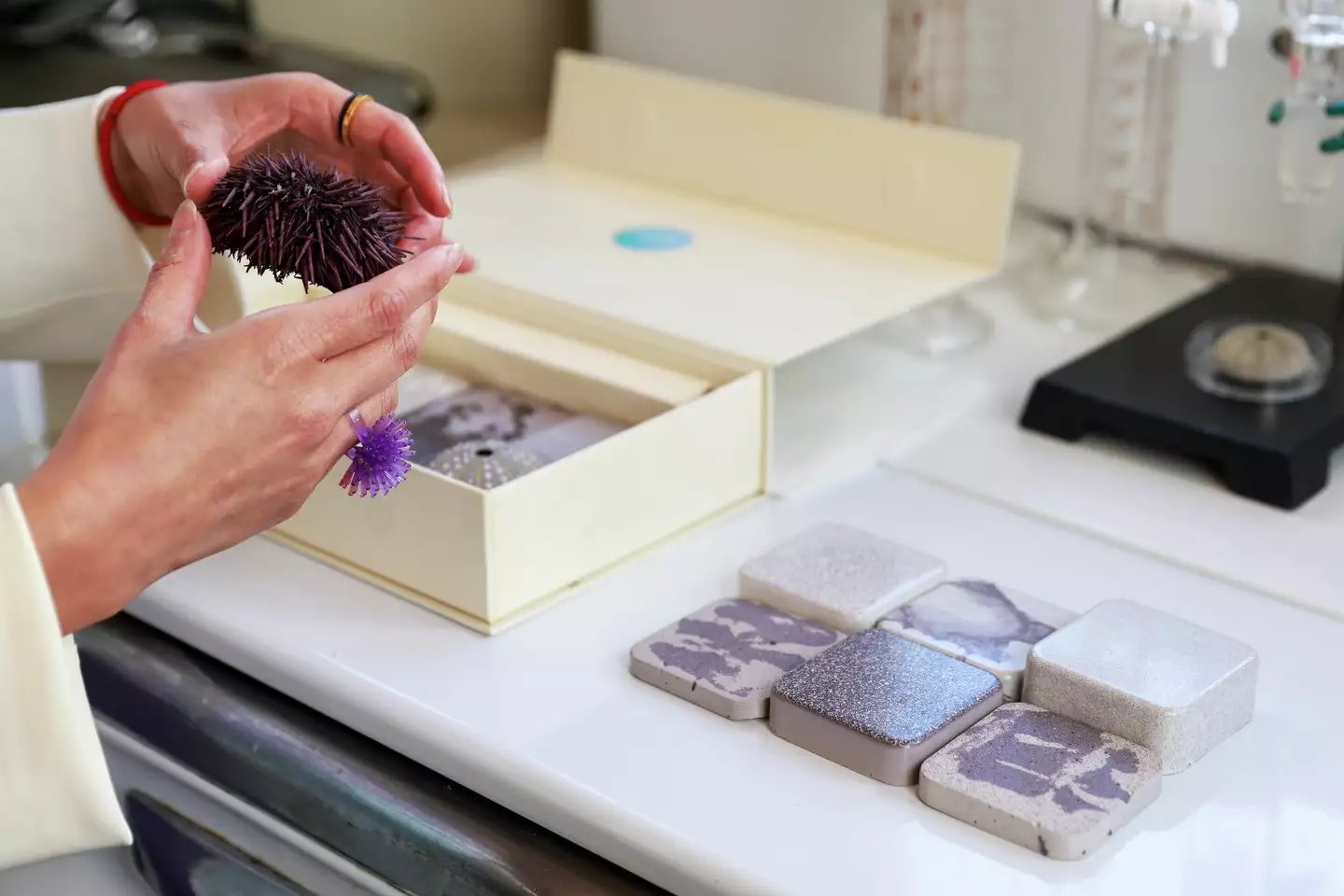Cove by cove, scientists, divers and volunteers are hauling up urchins to protect kelp.
By Raymond Zhong Photographs and Video by Glenna Gordon, The New York Times
Raymond Zhong and Glenna Gordon scuba dived with scientists and urchin-smashing volunteers to report this article
From the bluffs, you might have mistaken the little brown heads poking out of the ocean this month for seals, hundreds of them, gathered for a morning conclave. In fact, they were something almost as surprising: bulb upon glistening bulb of kelp, more of it than this cove in Northern California had seen in years.
Beneath the milky water, the kelp’s ropelike stems stood in thickets dense enough to snag the valve on a scuba tank. The parade of long, luxuriant blades, streaming out of each bulb like wavy tresses, made diving these waters feel a bit like touring a hairdressers’ convention.
A decade ago, the coastline north of San Francisco was the site of one of the most horrific deforestations ever recorded. More than 90 percent of the towering, majestic kelp forests, across 200 miles of glittering shore, were dead and gone in years. Felled by freakishly warm ocean water.
Sea creatures starved in droves, notably abalones, the giant mollusks prized for their buttery flesh. At the same time, a mysterious sickness was killing off another denizen of the kelp forests, the mighty, many-limbed sunflower sea star. Without these predators around, sea urchins ran amok, gorging on the kelp that remained and turning the reefs into spiky purple wastelands.
Today, acre by acre, beach by beach, efforts to undo the ruin are bearing early fruit. Or, rather, fronds.
At Portuguese Beach in Mendocino County, scientists are planting kelp seedlings and hiring divers to haul up urchins by the ton. As a result, kelp cover this year is 10 times what it was at its low point in 2023.
A few miles up the road, at Caspar Cove, state authorities are allowing recreational divers simply to smash urchins to bits with hammers and picks. The payoff? The kelp canopy there is nine times its area in 2020.
These and other pockets of recovery are small, scattered. Their success is hardly assured; another marine heat wave could set them back. But they are a crucial first step, scientists say. If enough kelp can be nurtured in these oases, then over time they might reseed more of the coast.
“We’re planting the garden,” said Tristin Anoush McHugh, who leads kelp restoration for the Nature Conservancy. “Let’s see what shows up.”
Bull kelp off the coast of Van Damme State Park, Calif., this month.
Pulling up urchin traps in Noyo Harbor; A kettlebell weighs down a rope module for growing kelp
The Nature Conservancy uses drone surveys to monitor kelp growth.
Kelp forests grow along a third of the world’s coasts, and the threats to them from ocean warming, pollution, overfishing and other stressors are growing in nearly every region. “In a lot of different places, the environments will never be as suitable for kelp forest as they used to be,” said Thomas Wernberg, a professor of marine botany at the University of Western Australia.
That raises big questions about how much any restoration project can hope to achieve, and how long it may need to last. “When are you done, if ever?” he said.
Diving at Portuguese Beach shows what it looks like to begin.
The Nature Conservancy and its partners have been planting baby kelp here, on simple rope modules that suspend the juveniles out of hungry urchins’ reach — nine modules last year, 60 this year. Come fall, the kelp is mature and can blast out trillions of spores, sowing seeds to grow the following year.
Already, the new kelp is helping the ecosystem show glimpses of its former self. During a recent dive, a plump sunflower sea star, about as wide as a dessert plate, with 15 or so chubby arms, was nestled between the rocks beneath one of the modules. Five other sunflower stars have been reported here so far this year.
Even so, you don’t have to swim very far to see parts of the reef that are still absolutely blanketed by urchins, like an invasion of purple alien pompoms.
To defend the kelp at Portuguese Beach, commercial divers have dredged up 41 tons of urchins over the past two years, mostly by hand. At Caspar Cove, volunteers have smashed up 16 tons since 2020. Both methods of pest control are laborious, and it’s unclear who would pay commercial divers to keep doing it year after year, to say nothing of enlisting more divers and expanding to more of the coast.
Culling urchins in Caspar Cove. Divers have dredged up tons of the spiny creatures, which graze on kelp.
KelpFest attendees collected urchins during low tide at Elk Beach.
Purple urchins in a tide pool at Mendocino Headlands State Park.
“There’s only 15 doing this work, and you need 1,500,” said Jon Holcomb, 80, a veteran diver.
One way to fund restoration would be to find something useful to do with all the urchins that are removed. Right now, many are composted or ground into gravel. But the Nature Conservancy and other groups have explored all manner of more-lucrative products that could be made from them, including dyes, filaments for 3-D printing, even leather. (Purple urchins generally aren’t valuable as seafood because they produce smaller gonads, which are those custardy golden lobes that go on sushi, than their red cousins.)
One promising product is countertops. A start-up, Primitives Biodesign, is developing a kind of urchin-shell marble, one that Virj Kan, the company’s chief executive, hopes will be strong but lightweight compared with natural stone. A single countertop could use up the urchins that would cover a tennis-court-size area of seafloor, Ms. Kan said. Primitives is aiming to deliver its first units next summer.
Jon Holcomb is a semi-retired urchin diver.
KelpFest, a community celebration of all things seaweed, took place in Mendocino County this month.
The urchin-ranching lab at the Noyo Center Marine Field Station in Fort Bragg.
The Kashia Band of Pomo Indians, a tribe in Sonoma County, is hoping the rewards from its restoration efforts will come from bringing back a cherished traditional food source.
Along a curl of ancestral coast called Shell Beach, the tribe and its partners are rehabilitating the kelp groves in order to reintroduce abalones there and rebuild the creature’s populations. They’ve hired commercial divers to clear out more than 50 tons of urchins in the past two years. But the tribe is also training its own divers, both to put a “tribal eye” on the work and to help keep it going for the long haul, said Nina Hapner, who leads the tribe’s environmental department.
“We’re all planting seeds and knowing we’re not going to see the full growth of the seeds that we plant,” said Atlas Elliott, 22, a Kashia diver. “But we know there’s going to be growth. We’re making our contributions. We’re watering our plants. We’re feeding our people. We’re doing what we need to do.”
Raymond Zhong reports on climate and environmental issues for The Times.


